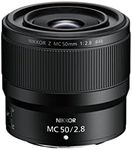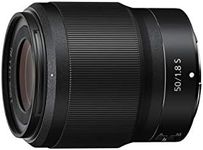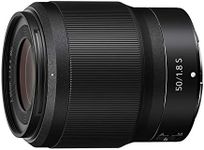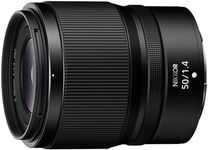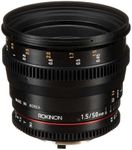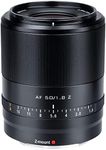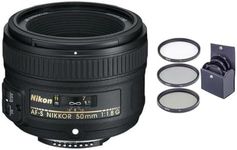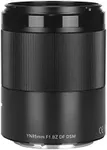Buying Guide for the Best 50mm Lens For Nikons
Choosing the right 50mm lens for your Nikon camera can significantly enhance your photography experience. A 50mm lens is often referred to as a 'nifty fifty' and is popular for its versatility, making it suitable for various types of photography, including portraits, street photography, and low-light situations. To make an informed decision, it's essential to understand the key specifications and how they align with your needs and preferences.ApertureThe aperture of a lens is indicated by the f-number (e.g., f/1.8, f/1.4). It determines how much light the lens can gather and affects the depth of field. A lower f-number means a larger aperture, allowing more light to enter, which is ideal for low-light conditions and achieving a blurred background (bokeh). If you often shoot in dim environments or want to create a shallow depth of field, opt for a lens with a wider aperture like f/1.4. For general photography, an f/1.8 aperture is usually sufficient and more affordable.
AutofocusAutofocus (AF) is a feature that allows the lens to automatically focus on the subject. This is crucial for capturing sharp images quickly, especially in dynamic situations. Lenses with advanced autofocus systems, such as Silent Wave Motor (SWM) or Stepping Motor (STM), offer faster and quieter focusing. If you frequently shoot moving subjects or need quick focus adjustments, look for lenses with these technologies. For more static subjects or manual focus enthusiasts, a basic AF system may suffice.
Build QualityBuild quality refers to the materials and construction of the lens. Higher-end lenses often feature metal bodies and weather sealing, making them more durable and resistant to dust and moisture. If you plan to use your lens in challenging environments or need a robust build for professional use, consider lenses with superior build quality. For casual or indoor photography, a lens with a plastic body can be lighter and more comfortable to carry.
Image StabilizationImage stabilization (IS) helps reduce camera shake, allowing for sharper images at slower shutter speeds. This feature is particularly useful in low-light conditions or when shooting handheld. If you often shoot in such scenarios, a lens with image stabilization can be beneficial. However, for those who primarily use a tripod or shoot in well-lit environments, this feature may be less critical.
Lens CoatingLens coating involves special treatments applied to the lens elements to reduce reflections, flare, and ghosting. This enhances image quality by improving contrast and color accuracy. If you frequently shoot in bright conditions or against strong light sources, lenses with advanced coatings can help maintain image clarity. For general use, standard coatings are usually adequate.
CompatibilityCompatibility ensures that the lens will work seamlessly with your Nikon camera. Nikon lenses are typically categorized into different series, such as AF, AF-S, and AF-P. Make sure the lens you choose is compatible with your camera's mount and autofocus system. Check your camera's manual or Nikon's website for compatibility information. This is crucial to ensure that all features of the lens can be utilized with your camera body.
